19 super-thrifty household hacks you can do with bicarb and vinegar
These two hero products can do wonders
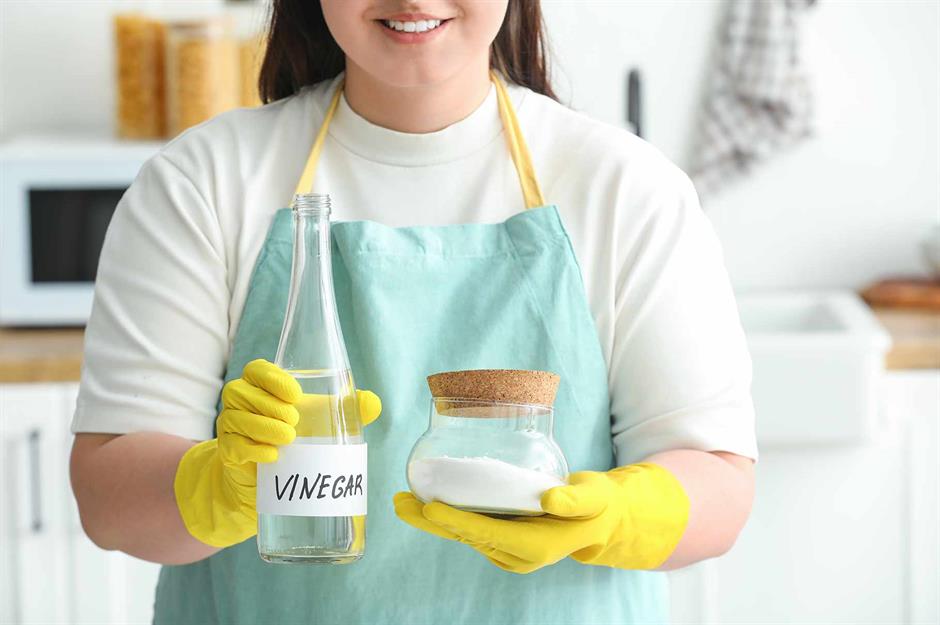
Vinegar and bicarbonate of soda aren't just kitchen essentials – they're powerful, natural cleaners and clever problem-solvers, too. From freshening up fabrics to tackling stubborn stains and soothing sunburn, these everyday staples can replace dozens of expensive products around the home. Discover easy, eco-friendly tips to simplify your cleaning, laundry, and beauty routines, all using items you probably already have in your cupboard.
Click or scroll to discover these thrifty bicarb and vinegar tips…
Keep your dishwasher clean and efficient
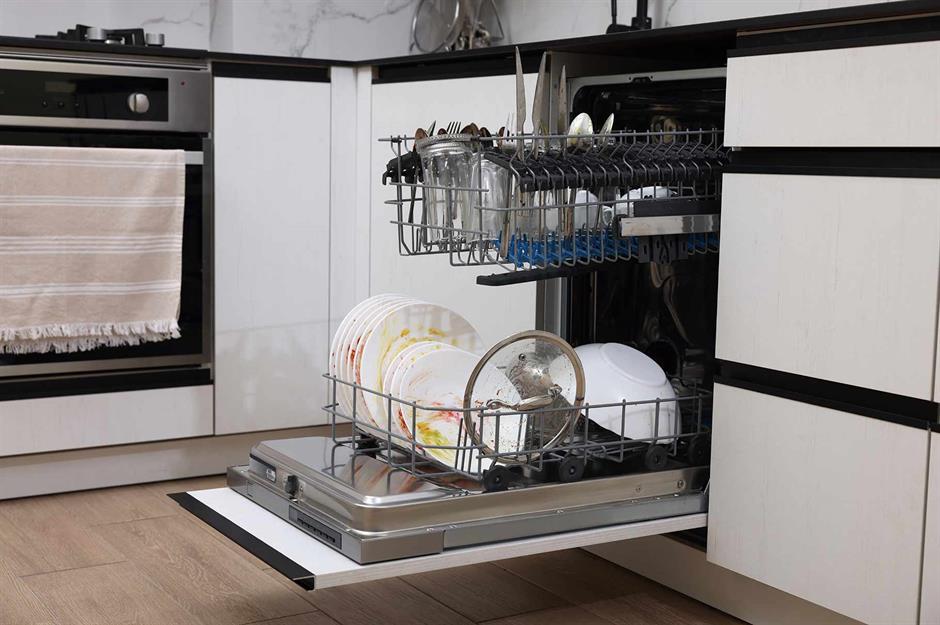
If you don’t run your dishwasher daily, it can start to smell musty. To keep it fresh between cycles, sprinkle a handful of bicarbonate of soda across the bottom of the machine. This gentle, odour-neutralising powder absorbs moisture and unpleasant smells without damaging components.
For best results, use regularly and combine with an occasional vinegar rinse to remove residue and limescale. It’s a simple trick that keeps your kitchen smelling clean and your appliance running efficiently.
Gently clean wallpaper
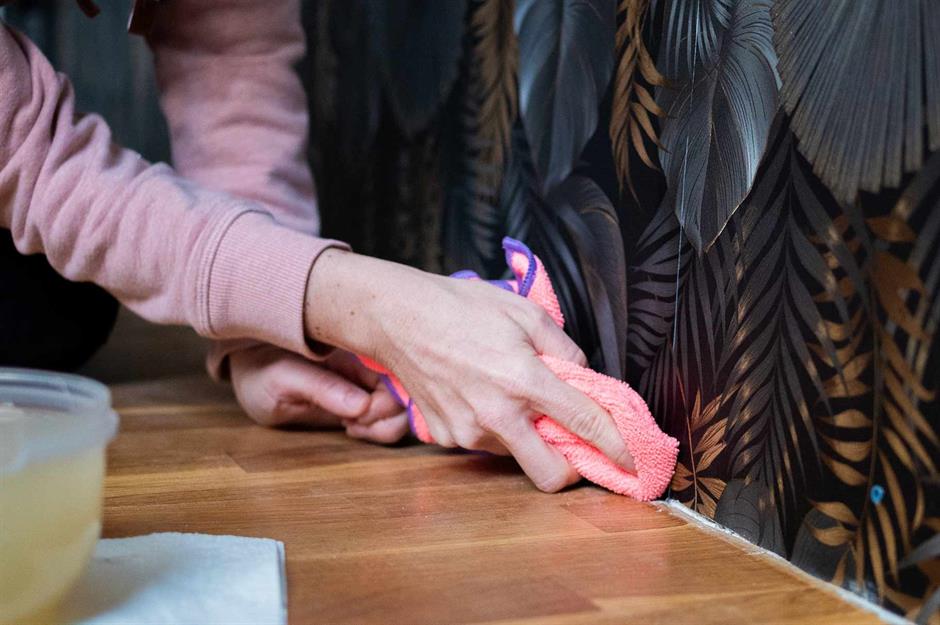
Greasy fingerprints and smudges can ruin the look of even the most stylish wallpaper. For washable types, mix baking soda with water to make a thick paste and gently rub over marks using a soft sponge or cloth.
Always test first in a hidden area to ensure it won’t damage the print. This gentle abrasive works well on tough spots while being safe enough not to strip colour or finish – perfect for giving walls a subtle refresh without harsh chemicals.
Cancel the crayon
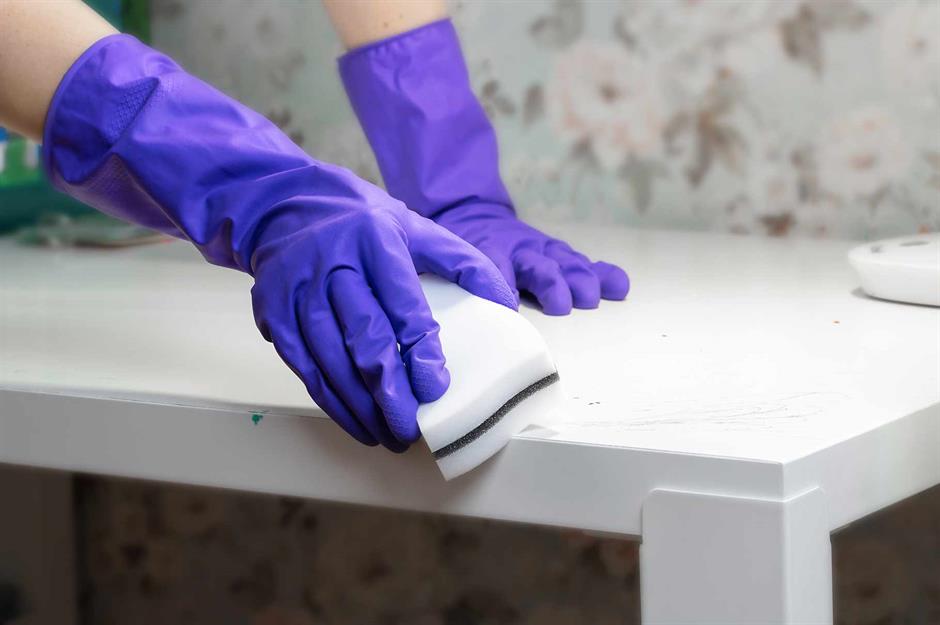
To brighten up white-painted furniture that’s become stained or marked, try this gentle cleaning solution: mix one tablespoon of bicarbonate of soda with around 1.15 litres (two pints) of warm water. Dip a soft cloth and gently rub the affected areas. It’s especially effective on scuff marks, crayon lines, or light stains.
Always wring out your cloth well before applying to avoid soaking the paint, and test in an inconspicuous area first for peace of mind.
Get the grill like new
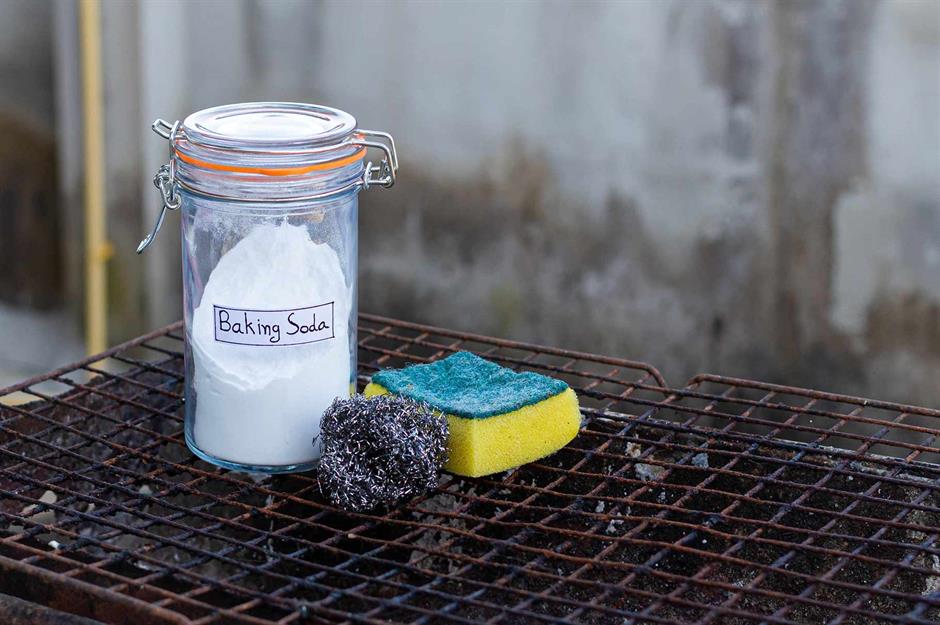
For a natural way to scrub away grease and grime from oven racks or barbecue grills, mix two tablespoons of bicarbonate of soda into 1.15 litres of warm water.
Use a stiff brush or scourer to scrub down the metal bars. For stubborn spots, apply dry bicarbonate of soda directly to a damp sponge and tackle the residue head-on. It’s a non-toxic alternative to harsh oven cleaners and won’t damage your grill’s surface or your hands.
Freshen up your pet
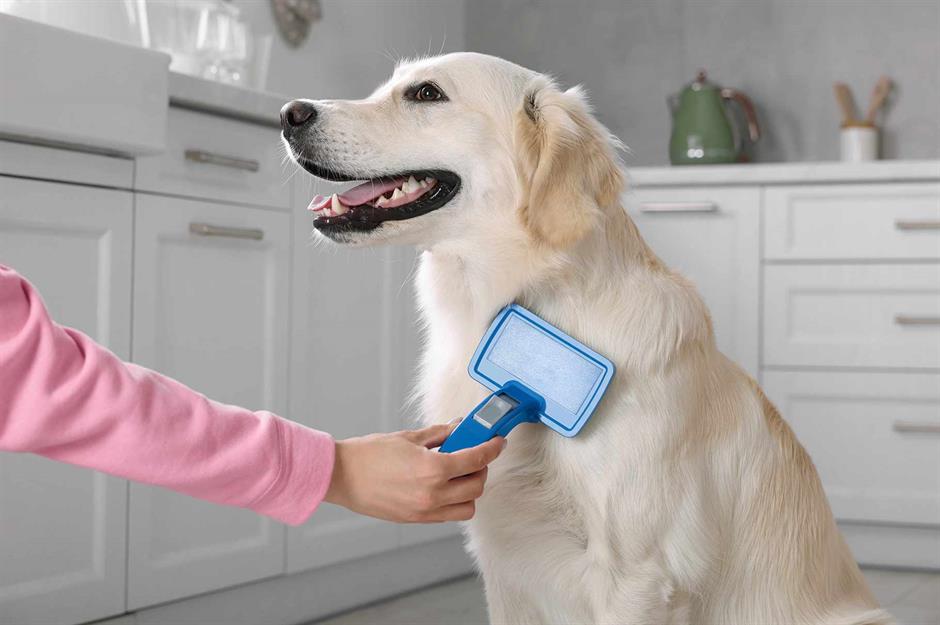
Skip the chemicals and go natural with a DIY dry dog shampoo. Just rub two tablespoons of bicarbonate of soda directly into your dog’s coat and brush through thoroughly.
It absorbs excess oils, neutralises odours, and leaves your pet smelling fresh between washes. It’s especially handy for dogs who hate bath time or during winter months when wet washing is trickier. Always avoid the eyes and nose, and consult your vet if your pet has sensitive skin.
Pre-treat yellow marks on white clothes
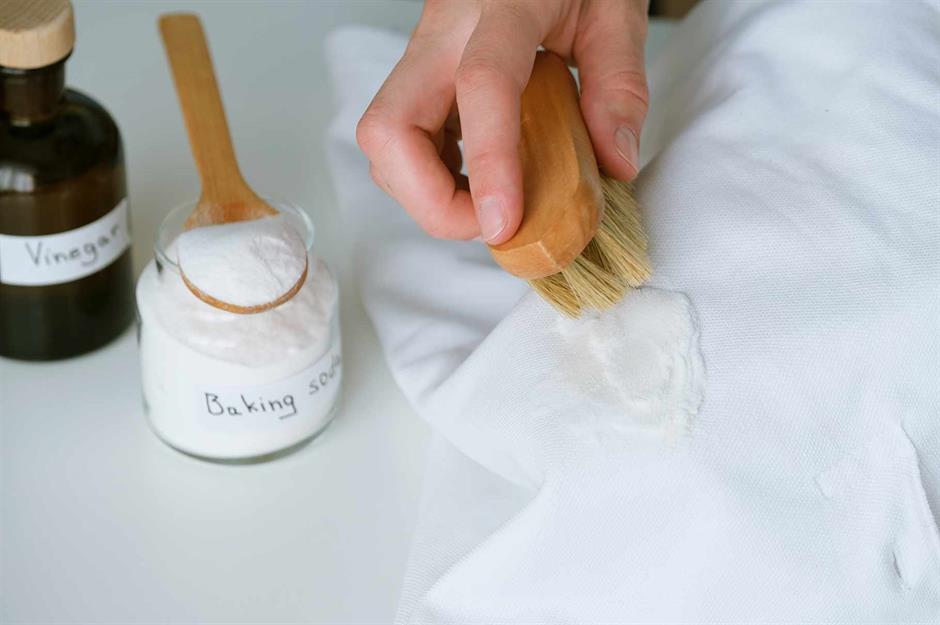
To tackle shirt collars and underarm marks, mix baking soda with vinegar to form a thick paste. Rub it into stains before tossing the item in the wash. For yellow perspiration marks, vinegar alone can do the trick – simply saturate the area, leave it for 15 minutes, then launder as usual.
These pantry staples are surprisingly effective on body oils and deodorant build-up, especially on white clothing. It’s a budget-friendly alternative to commercial stain treatments.
Scrub the shower curtain
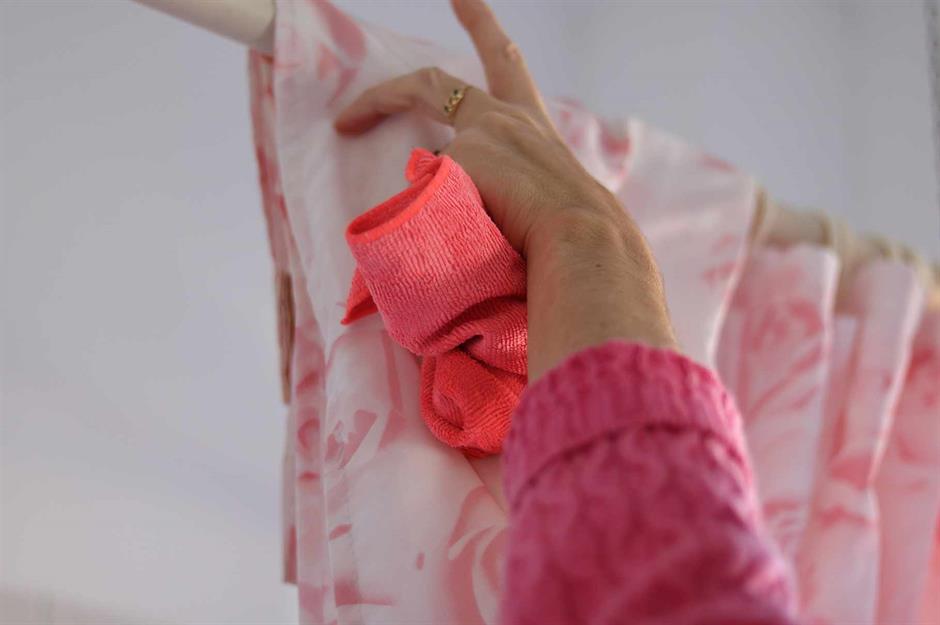
Tackle mildew stains on vinyl or plastic shower curtains with a homemade paste of bicarbonate of soda and water. Apply using a soft cloth or sponge, scrub gently, then rinse thoroughly with warm water or run through the washing machine.
This natural method works well for removing dark patches and soap scum without harsh chemicals. For heavy build-up, let the paste sit for a few minutes before scrubbing. Repeat regularly to keep your curtain fresh and prolong its life – no need to replace it prematurely.
Revitalise your favourite mugs and teapots
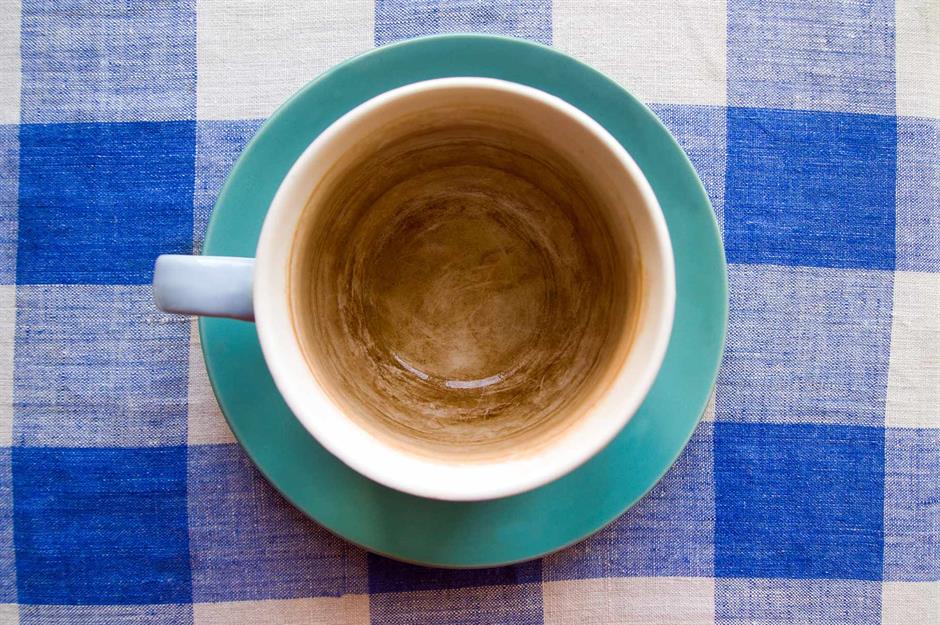
Tea stains can build up quickly in your favourite teapot, especially if you’re a daily drinker. To clean the inside without scratching it, rub the stained areas with a paste made from bicarbonate of soda and a little water, using a soft cloth or sponge.
This gentle, food-safe cleaner removes tannin build-up and restores the pot’s interior without leaving a taste or smell. Rinse thoroughly afterwards and let it air dry before your next brew.
Clean out your iron
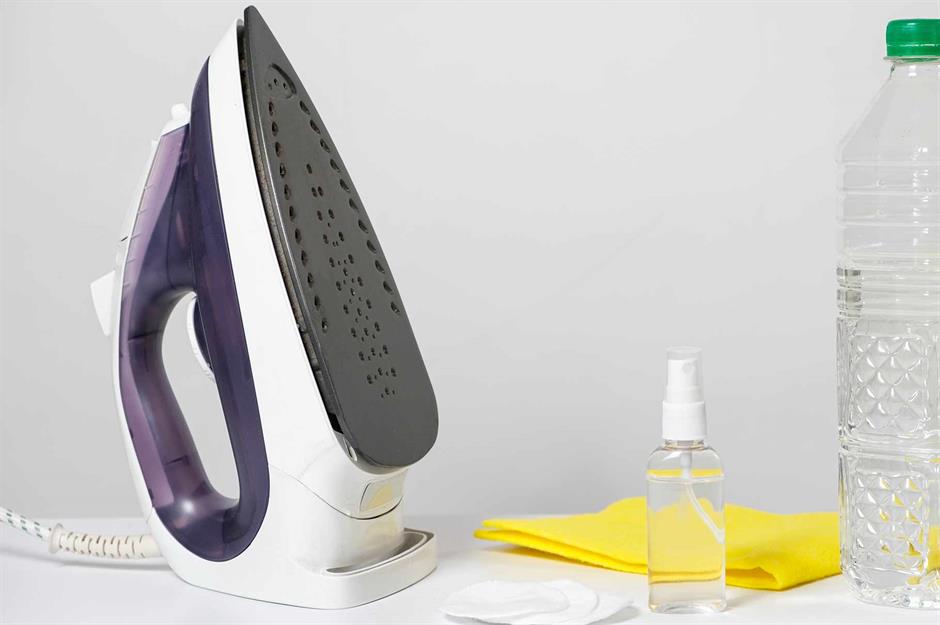
Descale a steam iron by filling the water tank with equal parts white vinegar and water to extend its life. Let it steam until the tank is empty, dissolving mineral deposits as it goes. Once done, rinse thoroughly with plain water and refill. Shake the tank gently to remove residue.
This method is ideal for older irons with visible limescale, but you should always check your manufacturer’s instructions first, as some models advise against vinegar use.
Get rid of smells
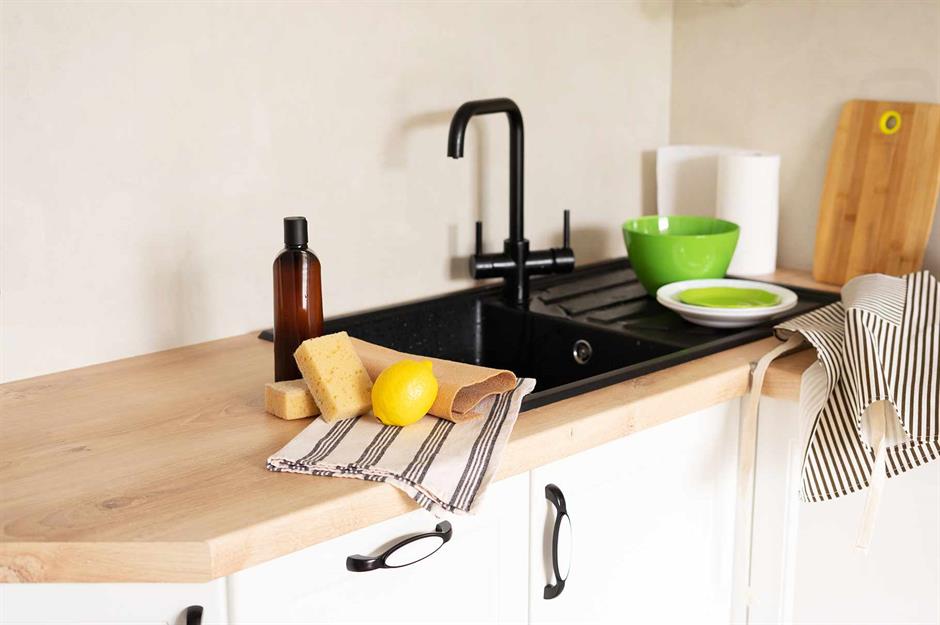
Cooking with garlic, onions, or fish? Neutralise lingering smells on your hands, chopping boards, and worktops by rinsing them with vinegar. It cuts through strong odours far better than soap alone.
After rinsing, wash your hands with warm water and your usual soap to remove any vinegary scent. This quick fix is especially useful after preparing seafood or handling pungent herbs like coriander or basil. Keep a small bottle of vinegar near the sink as your go-to kitchen deodoriser.
Descale the kettle
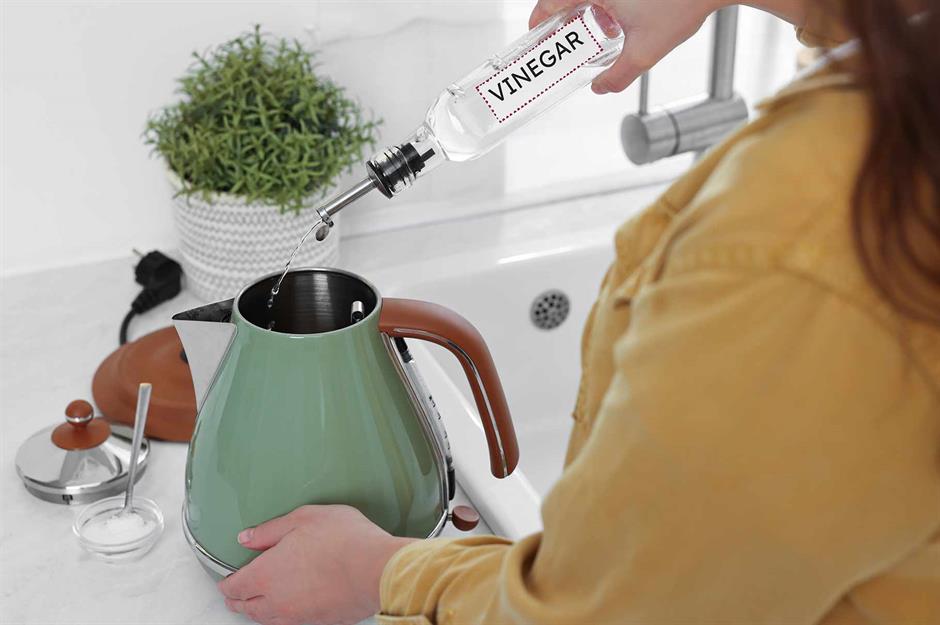
Tackle lime deposits in your kettle by filling it with equal parts vinegar and water. Bring the solution to the boil, then leave it to stand overnight. In the morning, rinse thoroughly and boil fresh water once or twice to clear out any lingering taste.
This gentle descaling method is ideal for hard-water areas where mineral build-up is common. Repeat monthly to keep your kettle running efficiently and prevent chalky residue from affecting your drinks.
Give shoes a new shine
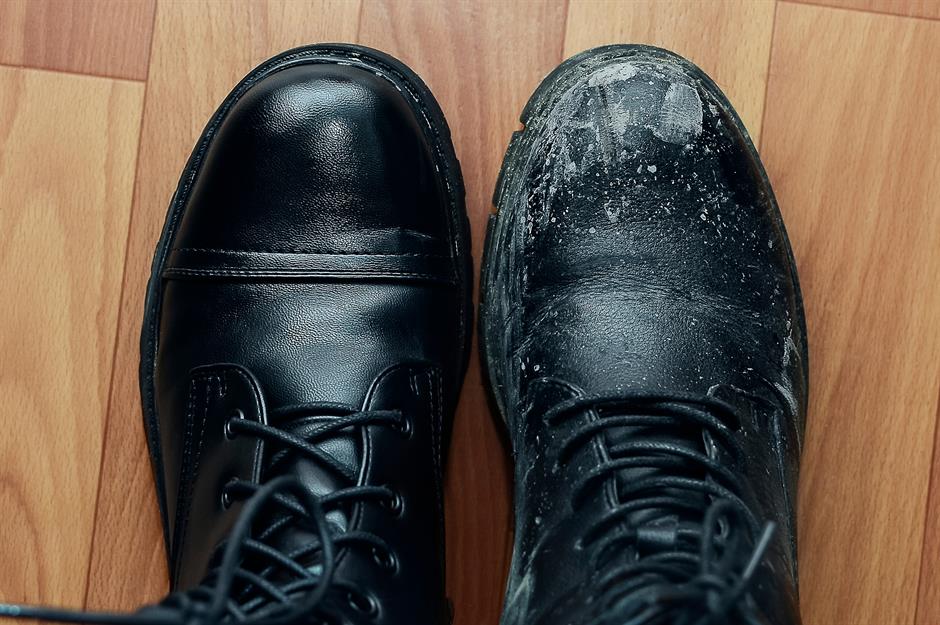
Winter weather often leaves unsightly salt marks on leather shoes. To remove them, mix one tablespoon of vinegar with one cup (237ml) of water and dip in a soft cloth. Wipe the stained areas gently, then dry thoroughly. The acidic vinegar breaks down salt deposits without damaging the leather.
Finish with a polish or leather conditioner to restore shine and softness. This tip is a cold-weather must-have for keeping boots and shoes looking smart all season.
Rescue a carpet
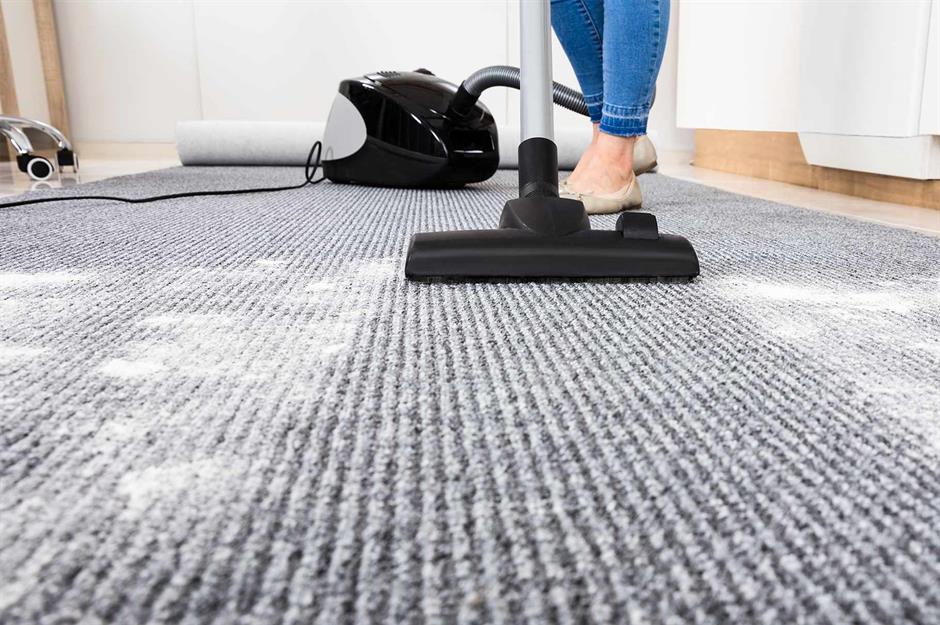
Bicarbonate of soda is a non-toxic cleaning staple that works wonders on almost any cleaning task. You can even use it to refresh carpets: it’s brilliant for removing both greasy and non-greasy stains and eliminating odours.
Simply sprinkle the powder over carpets and rugs in the evening and leave it overnight. In the morning, when you vacuum the area, you’ll find that the area smells fresh all over again.
Remove rust
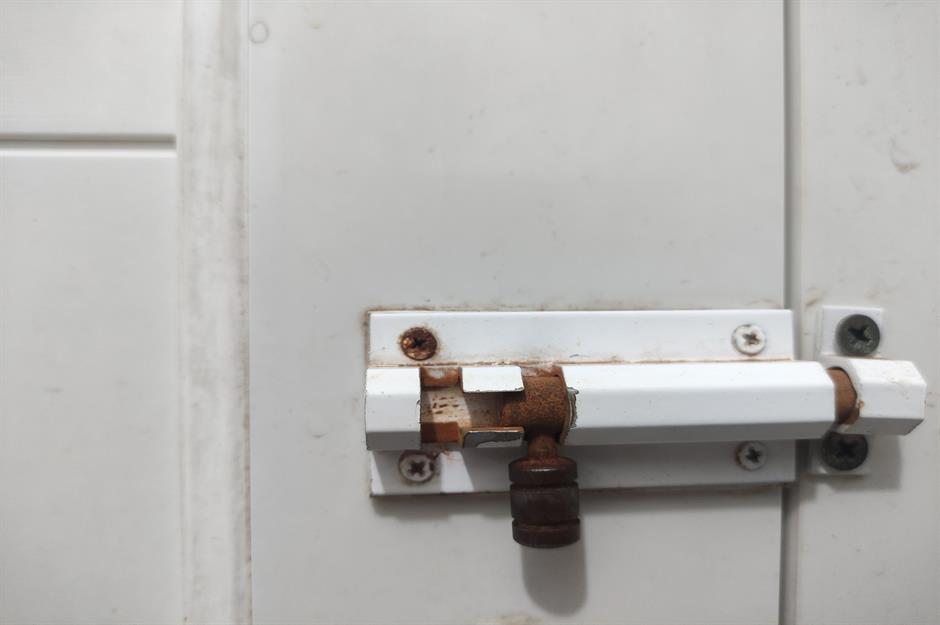
To revive rusty bolts or tools, submerge them in vinegar for several days until the corrosion dissolves. The acetic acid in vinegar naturally breaks down rust without damaging the metal underneath.
After soaking, scrub with a wire brush if needed, rinse and dry thoroughly to prevent further rusting. It’s an eco-friendly and inexpensive solution for garden tools, screws, or bike parts. Just be patient – it takes time, but it works wonders on heavy oxidation.
Make your own bath soak

Ease aching muscles or soothe itchy skin with a relaxing vinegar soak. Add 8fl oz (around 225ml) of cider vinegar to a warm bath, then soak for at least 15 minutes. The vinegar helps balance skin pH, relieve inflammation, and calm irritation.
It’s especially helpful after exercise, sun exposure, or dry winter weather. For a spa-like touch, add Epsom salts or a few drops of lavender oil. Avoid if you have broken skin or open wounds.
Skip the softener
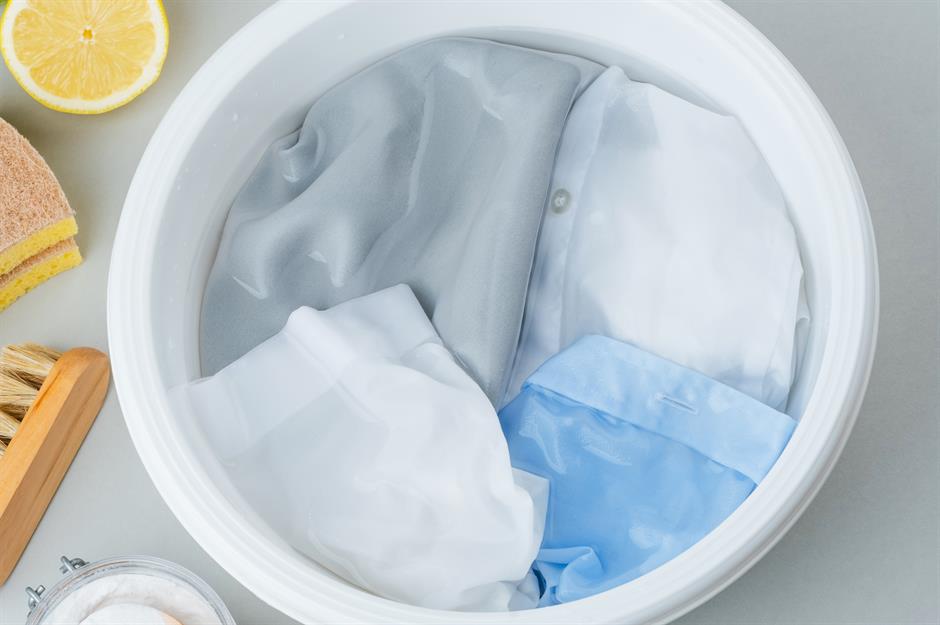
Brighten whites and remove built-up detergent by soaking laundry in a mix of 8fl oz (225ml) white vinegar and one gallon (4.5 litres) of water. Let items sit for at least 30 minutes before rinsing in clean water.
This method is especially good for old T-shirts and towels that have gone dingy or stiff. The vinegar acts as a natural fabric softener and deodoriser, too – an easy, chemical-free way to revive tired-looking laundry.
Ditch the bleach on your dishcloths
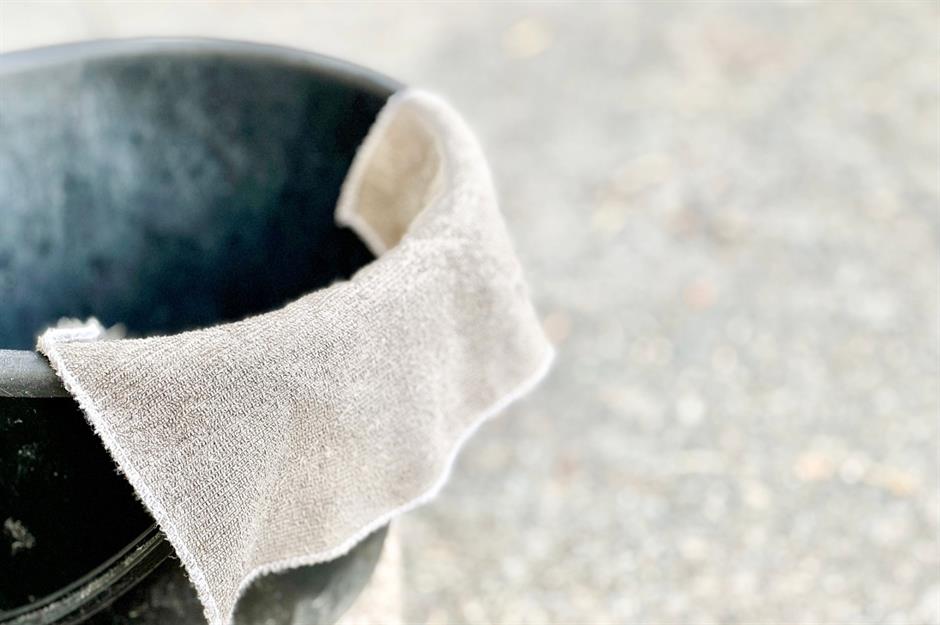
If your dishcloth starts to smell or goes stiff, soak it overnight in a solution of equal parts white vinegar and water as an easy, eco-conscious way to freshen up cleaning cloths without resorting to bleach. Rinse thoroughly in clear water and let it dry naturally.
The vinegar breaks down bacteria and soap scum while softening the fibres. Repeat weekly to keep dishcloths hygienic and extend their lifespan – especially useful in busy kitchens.
Get smear-free windows
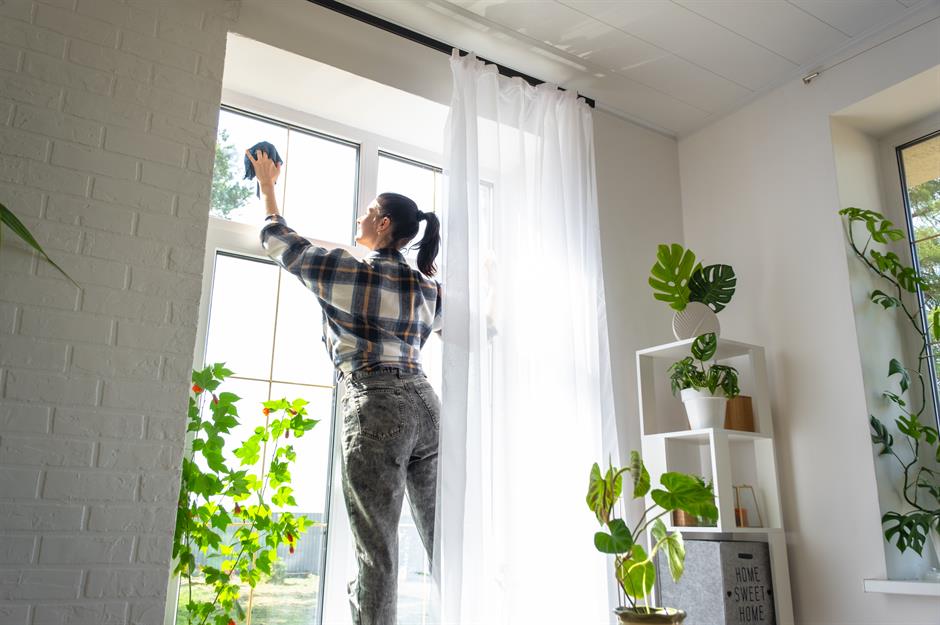
Mix two tablespoons of vinegar with one litre (two pints) of warm water for streak-free window cleaning. Wipe from top to bottom on the inside of the window and side to side on the outside – this way, you’ll spot which side any streaks are on.
Use a microfibre cloth or squeegee for best results. It’s a tried-and-tested solution that leaves glass sparkling without the need for ammonia-based products. Great for mirrors and shower screens, too.
Refresh your bin
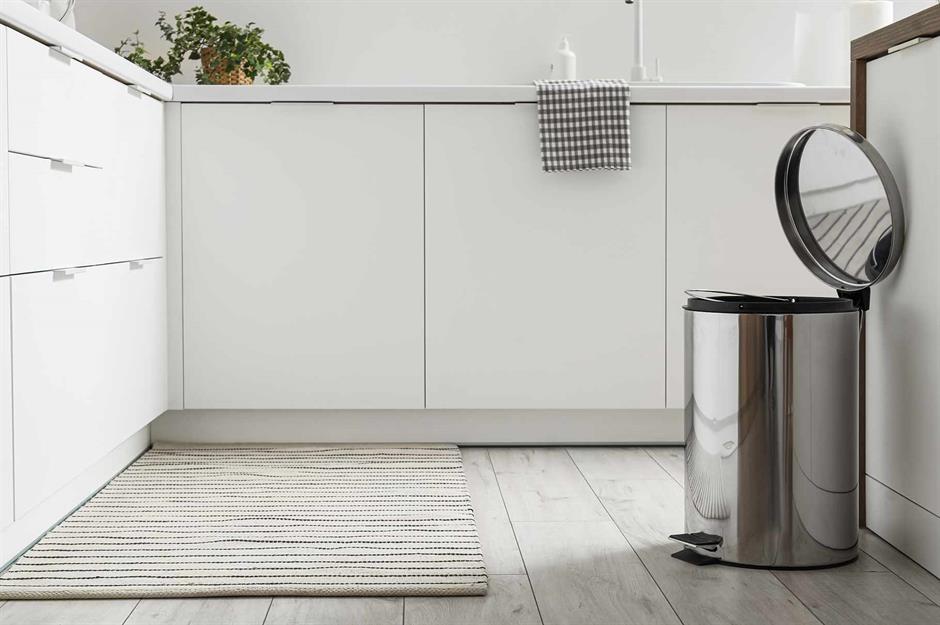
Keep kitchen bins and outdoor trash cans fresh with the natural power of bicarbonate of soda or vinegar. Sprinkle a generous layer of bicarb into the bottom of the bin to absorb odours between bag changes.
For a deeper clean, rinse the bin with a solution of vinegar and warm water to sanitise and neutralise lingering smells. Both methods are eco-friendly, affordable, and chemical-free – ideal for keeping household waste areas clean, fresh, and more hygienic.
Loved this? Take a look at more household hacks and tips
Comments
Be the first to comment
Do you want to comment on this article? You need to be signed in for this feature